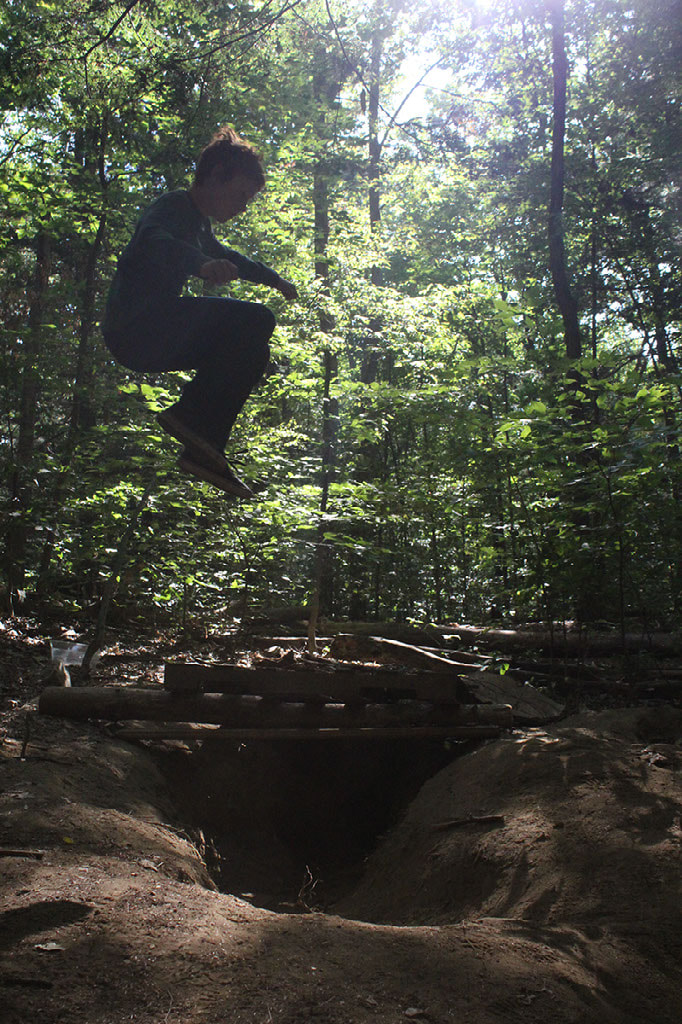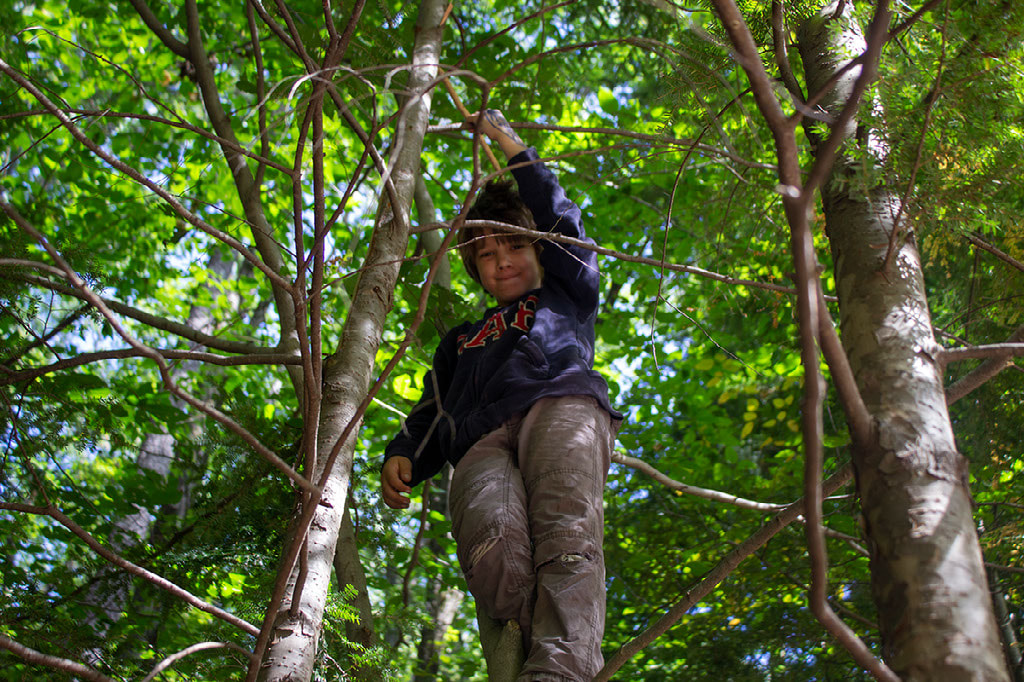ELEMENTARY SCHOOL
We are currently working on rebuilding our elementary program. We are not offering it at this time.
Our elementary school program is designed for students from kindergarten through 6th grade. Teachers work with mixed-age classrooms grouped according to abilities for most academic activities. Classrooms may be located in the Neighborhood Schoolhouse building, the forest, the playground, or the yurt. In addition to our regular classroom program, NSH offers special programming which may include: field trips, music and all-school sing, environmental science, art, P.E., and hiking. During the course of the year, there are several special events that we celebrate, including but not limited to: all-family picnics and camp-outs, parent meetings, grandparent/special friends' day, Enchanted Halloween, Peace Pole Ceremony, family curriculum night, bike-a-thon, and an end of the year Ribbon Ceremony. We are a state-approved independent school.
Our elementary school program is designed for students from kindergarten through 6th grade. Teachers work with mixed-age classrooms grouped according to abilities for most academic activities. Classrooms may be located in the Neighborhood Schoolhouse building, the forest, the playground, or the yurt. In addition to our regular classroom program, NSH offers special programming which may include: field trips, music and all-school sing, environmental science, art, P.E., and hiking. During the course of the year, there are several special events that we celebrate, including but not limited to: all-family picnics and camp-outs, parent meetings, grandparent/special friends' day, Enchanted Halloween, Peace Pole Ceremony, family curriculum night, bike-a-thon, and an end of the year Ribbon Ceremony. We are a state-approved independent school.
Sample Elementary School Experiences
Forest
Early in the year, children choose "sit spots" where they contemplate and imagine what their forest village will look like this year. Communities establish spaces based on concepts they are learning. In the upper elementary classroom, students learn about architecture's scale of one inch to one foot. This is the ideal size to be able to get a real feeling for how things fit into a space and what you need to do to a space to improve it for people to be comfortable in it. With this understanding, students spend time together building individual or small group forts. Any branches that fall from the trees are tools to be used in this and other endeavors. They might be just the thing someone needs to make an axe, marimba, or wood burning design. The gnarled roots are perfect for handmade habitats to observe red efts or caterpillars. The dirt by the roots, mixed with a little water, makes excellent food in the mud kitchen. Sometimes you can find tracks, and a child will run inside to grab a field guide. A child carefully plants acorns to ensure that Neighborhood always has a forest to play and learn in.
Science
The Science Yurt may be abuzz with the sights and sounds of insect study: metamorphosis, life cycle, habitat, anatomy, camouflage, and adaptation. Students gather milkweed from our school garden to create a habitat for monarch butterflies, bursting with excitement and anticipation when the caterpillars become chrysalises. "Olders" may be engaging in discussions about climate change and global warming while "Middles" are interpreting graphs and coming to conclusions after reading the data about climate change.
Language Arts
Language Arts might begin and end with a writing activity such as journal writing or reflection. Students are introduced to the phonics or grammar focus of the week and play a game to practice. Later in the week, students apply the focus to the reading as well as discuss vocabulary and comprehension in book club guided reading groups. Students work on writing and typing longer pieces, and work on "passion projects" such as stories, articles, or graphic novels.
Math
Each day in Math, students of all ages might start their learning groups with a mathematical conversation. On Make a Guess Mondays, students independently estimate how many items are in a jar, work together to count them, then determine the difference between their guesses and the actual amount. On Number Talk Tuesdays, students evaluate an expression and explain their thinking and how they arrived at an answer. On What's Math For? Wednesdays, we talk about times we encounter math in our lives outside school. On Think Out Loud Thursdays, we look at something like a bar graph or pattern and students talk about what they notice and what that information might mean or how it could be used. Each learning group engages in their classwork, then we end our time with a quick game like Math UNO or Race to 100.
Art
Students often begin and end the year by crafting Artist Trading Cards which they can use to see how their art develops and evolves throughout their years at Neighborhood. Students also engage in big art projects, such as exploring architecture as an art form and sculpting a city. Other groups may explore graffiti and street art. They may create their own stencils to use in a spray painting activity.
Music
Music classes may involve percussion, wind instruments, and more. Students learning the recorder practice new fingerings, stretching out their hands on the new alto and tenor recorders. All students do a little singing as well, learning songs to sing together at Neighborhood Schoolhouse's annual Peace Pole event in November.
Folk Dancing
Neighbor's Hall is filled with excitement, music, and rhythm as students learn dances from all over the world. Often these dances are paired with social studies lessons that take a deeper dive into the cultures from which the dances came.
Choice Time
Students engage in weekly indoor choice time. On the large rug you may see a few children building an epic marble maze, creating with Legos, or playing a board game together. The long, family style benches and tables have children scattered about taking advantage of open studio art time or working on writing an essay that they feel passionately about. One student may be snuggled up on a comfortable couch with a book.
Early in the year, children choose "sit spots" where they contemplate and imagine what their forest village will look like this year. Communities establish spaces based on concepts they are learning. In the upper elementary classroom, students learn about architecture's scale of one inch to one foot. This is the ideal size to be able to get a real feeling for how things fit into a space and what you need to do to a space to improve it for people to be comfortable in it. With this understanding, students spend time together building individual or small group forts. Any branches that fall from the trees are tools to be used in this and other endeavors. They might be just the thing someone needs to make an axe, marimba, or wood burning design. The gnarled roots are perfect for handmade habitats to observe red efts or caterpillars. The dirt by the roots, mixed with a little water, makes excellent food in the mud kitchen. Sometimes you can find tracks, and a child will run inside to grab a field guide. A child carefully plants acorns to ensure that Neighborhood always has a forest to play and learn in.
Science
The Science Yurt may be abuzz with the sights and sounds of insect study: metamorphosis, life cycle, habitat, anatomy, camouflage, and adaptation. Students gather milkweed from our school garden to create a habitat for monarch butterflies, bursting with excitement and anticipation when the caterpillars become chrysalises. "Olders" may be engaging in discussions about climate change and global warming while "Middles" are interpreting graphs and coming to conclusions after reading the data about climate change.
Language Arts
Language Arts might begin and end with a writing activity such as journal writing or reflection. Students are introduced to the phonics or grammar focus of the week and play a game to practice. Later in the week, students apply the focus to the reading as well as discuss vocabulary and comprehension in book club guided reading groups. Students work on writing and typing longer pieces, and work on "passion projects" such as stories, articles, or graphic novels.
Math
Each day in Math, students of all ages might start their learning groups with a mathematical conversation. On Make a Guess Mondays, students independently estimate how many items are in a jar, work together to count them, then determine the difference between their guesses and the actual amount. On Number Talk Tuesdays, students evaluate an expression and explain their thinking and how they arrived at an answer. On What's Math For? Wednesdays, we talk about times we encounter math in our lives outside school. On Think Out Loud Thursdays, we look at something like a bar graph or pattern and students talk about what they notice and what that information might mean or how it could be used. Each learning group engages in their classwork, then we end our time with a quick game like Math UNO or Race to 100.
Art
Students often begin and end the year by crafting Artist Trading Cards which they can use to see how their art develops and evolves throughout their years at Neighborhood. Students also engage in big art projects, such as exploring architecture as an art form and sculpting a city. Other groups may explore graffiti and street art. They may create their own stencils to use in a spray painting activity.
Music
Music classes may involve percussion, wind instruments, and more. Students learning the recorder practice new fingerings, stretching out their hands on the new alto and tenor recorders. All students do a little singing as well, learning songs to sing together at Neighborhood Schoolhouse's annual Peace Pole event in November.
Folk Dancing
Neighbor's Hall is filled with excitement, music, and rhythm as students learn dances from all over the world. Often these dances are paired with social studies lessons that take a deeper dive into the cultures from which the dances came.
Choice Time
Students engage in weekly indoor choice time. On the large rug you may see a few children building an epic marble maze, creating with Legos, or playing a board game together. The long, family style benches and tables have children scattered about taking advantage of open studio art time or working on writing an essay that they feel passionately about. One student may be snuggled up on a comfortable couch with a book.









